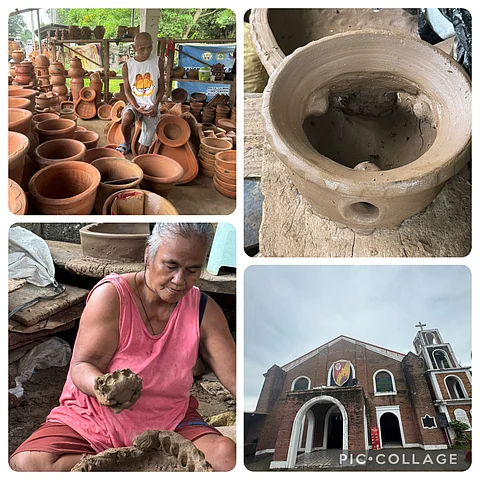
- NEWS
- the EDIT
- COMMENTARY
- BUSINESS
- LIFE
- SHOW
- ACTION
- GLOBAL GOALS
- SNAPS
- DYARYO TIRADA
- MORE

Driving north from Tuguegarao City, the landscape slowly shifts into rolling hills that cradle the quiet riverside town of Iguig. At first glance, it may seem like another laidback Cagayan municipality, but a closer look reveals a community where faith, tradition, and artistry converge—etched in red bricks and molded in clay.
A church built on red bricks and rolling hills
At the heart of Iguig rises a Spanish-era marvel built in the 18th century. Unlike the coral stone or adobe structures that dominate much of the Philippines, Iguig’s church is constructed almost entirely of red bricks. Its most striking features are the rare flying buttresses, which give the church both strength and grandeur.
From the hilltop, the grounds open to a breathtaking vista—the winding Cagayan River below and the Stations of the Cross spread across the slopes, making the site a pilgrimage destination during Holy Week. Just steps away, remnants of the colonial past linger: the old town well and a brick stairway that once led down to the river, silent witnesses to centuries of devotion and community life.
Clay that holds a town’s legacy
But Iguig’s heritage isn’t written in bricks alone—it is also shaped by clay. Known today as the “Pottery Center of Cagayan,” the town preserves an age-old craft that has been passed down for generations.
In Barangay Atulu, home to the indigenous Itawis people, pottery remains a thriving cottage industry. The process is simple yet profound: artisans mix raw clay, mold it with their bare hands and wooden tools, then fire it in traditional kilns. The result is a range of terra-cotta creations that blend function and artistry.
Along the highway, shops proudly display these handcrafted wares—palayok (clay pots), kalan (stoves), and pugon (ovens)—items that remain staples in many Filipino households. More than souvenirs, they are everyday testaments to resilience, having survived not only the passage of time but also the devastations of World War II.
A stop worth making
For travelers heading north of Tuguegarao, Iguig offers more than just a pause on the journey. It is a town where one can stand before a centuries-old church, walk the paths of pilgrims, and witness artisans keep alive a tradition as old as the community itself.
In Iguig, bricks and clay do more than build walls or shape pots—they tell the story of a people whose faith and craftsmanship continue to define their identity.
